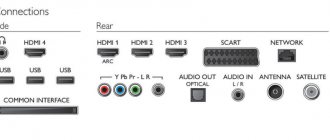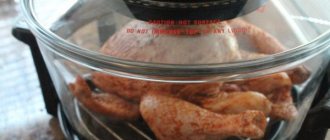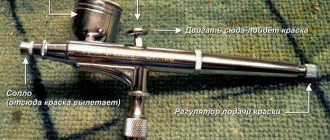The culture of healthy eating continues to develop - more and more people of different age categories are giving up junk food. Proper cooking is in fashion today, so people pay attention to special household appliances that allow them to create healthy and tasty dishes. Drying is one of the food processing methods that allows you to preserve valuable substances in food and prepare food in advance. This way you can prepare fruits, vegetables, meat - using a dehydrator. Here's what user Marishka writes:
Mariska
“Hi! My mother-in-law and I (I gave it to her) have Sukhovey dryers for 5 pallets. Both I and my mother-in-law are very pleased with the drying. I don’t know what exactly my mother-in-law is drying. I dry vegetables (carrots, parsley, onions), mushrooms are great!!”
A dehydrator is often called a dryer, since the operating principle of these devices is the same. But there are significant differences. A dehydrator can use a low temperature of 40 ° C, while a dryer can only use hot air. The first distributes the heat evenly, and in the dryer it usually comes from the bottom, so pieces of food on the lower trays can burn. It is impossible to preserve enzymes and other beneficial substances of some types of foods at such high temperatures, so a dehydrator is preferable.
If you want to use this miracle technology, it is important to pay attention to a number of features of a food dehydrator when purchasing - devices can differ significantly from each other.
Principle of operation
To understand what exactly to look for when choosing a dehydrator for vegetables and fruits, it is good to learn more about the operating principle of the device. The device heats the air inside a closed chamber, which circulates, drying pre-prepared products. The dehydrator dryer consists of the following main parts:
- housings;
- heating element
- fan;
- temperature sensor.
The heating intensity of the air flow is adjustable. For this purpose, there is a control panel on the case. Vegetables, fruits, mushrooms or other products are pre-cut (into slices, slices, strips) and laid out on pallets in the form of a mesh that allows air flow to pass through. The operating temperature range of the device is from 35 to 70°C.
Some of the latest dehydrators are characterized by a cubic shape, more uniform heating and increased volume, which allows you to prepare considerable supplies of food. Round and compact devices are designed for drying small quantities of food. The cost of popular models is presented below (prices in different regions and stores may vary significantly):
| Name | price, rub. |
| Katrina Samobranka | 850 |
| Sukhovey M8 | 1850 |
| BelOMO 8360 | 3170 |
| VolTera Lux 1000 | 6900 |
| Summer resident-4 | 8450 |
| EzidriSnackmaker FD 500 | 11700 |
| Ezidri Ultra FD 1000 | 16200 |
The more functions and modes, the correspondingly more expensive the equipment. Some dehydrators have a whole list of special programs, a humidity sensor and other devices.
Digest of reviews of dehydrators (food dryers) tested in the iXBT.com laboratory
Faced with the need to purchase a new household appliance, the user inevitably has to become an expert in a particular field. Of course, you can always rely on the recommendations of a consultant in a store or trust the reputation of a popular brand, but these methods often lead to frankly unsatisfactory results. As well as studying numerous user reviews (many of which, as you know, are advertising or paid).
An adequate solution would be to study articles on specialized resources and materials from professional reviewers, but this will require considerable time.
Especially for those who want to get an objective opinion about household appliances, but are not ready to study multi-page texts, we decided to release a series of digest reviews of kitchen and household appliances that were tested in the iXBT.com laboratory.
The topic of today's digest is household dehydrators (dryers) for food products.
Household dryers (dehydrators) are, as a rule, not very complex devices that are used mainly for processing (drying) products for their subsequent long-term storage. However, this device also has a second popular area of application: dehydrators are actively used by supporters of a raw food diet and adherents of a vegetarian lifestyle. For this category of users, the dehydrator is not a device for the production of blanks, but a full-fledged kitchen device that is used along with other electrical appliances.
It is clear that the requirements for dehydrators differ significantly depending on the frequency of use of the device and the tasks assigned to it: processing the crop once a season or using the device on an ongoing basis are fundamentally different use scenarios.
Let's take a look at the dehydrators tested in the iXBT.com laboratory, note their advantages and disadvantages, and also decide for which tasks certain models are better suited. At the end of the review, we will provide a summary table comparing the characteristics and capabilities of the tested devices.
Kitfort KT-1912
Kitfort KT-1912 is a compact device with predictably low (but not the lowest) power. Visually, the dryer gives the impression of a high-quality device in the “slightly above average” category. There are several reasons for this: the stylish design and the use of metal in the design of the case.
The dryer trays are rectangular in shape and made of transparent food-grade plastic. The design of the pallets means that when installed on top of each other, they “assemble” into a single structure. The corners of the pallets are rounded. There is a ventilation hole in the center, and handles on the sides that allow you to take an arbitrary number of pallets at once.
Heating is produced in the lower part of the case (where the heating element and fan are located), which means that to achieve the most uniform result, you will have to rearrange the trays from time to time.
The dryer control panel consists of a power button, an operation indicator and a mechanical regulator that allows you to set the temperature in the range from 35 to 70 °C. The device does not have a timer.
Based on the test results, it turned out that the device’s capacity is about 2 kg of raw materials, so such a dryer is unlikely to be suitable for processing the autumn harvest. But she is quite capable of handling simple everyday tasks.
We were especially pleased with the low energy consumption: the device will most likely spend about 1-1.5 kWh to dry one full “load”, which in monetary terms will be disproportionately small compared to the price of the feedstock.
The lack of a timer was somewhat disappointing, but our experience in operating such devices has shown that it is better not to leave dried products for a long time (in this case they begin to re-absorb moisture from the air). However, for more than three thousand rubles, we would expect to see the device have at least a simple automatic shutdown mechanism based on time.
Gemlux GL-FD-01R
Gemlux GL-FD-01R is an inexpensive and completely standard device, without any bells and whistles or unexpected functions. The design of the device is also “classic” - round plastic trays that are installed on top of each other, and hot air supply from below.
Unfortunately, the cells of the pallets are quite large, and therefore you will have to cut the products coarsely or make supports from gauze or other suitable materials. Such nuances should be kept in mind when choosing such a device.
Based on the test results, it turned out that the device generally copes with its responsibilities, however, it has some problems with the uniformity of heating: every couple of hours you will have to mix the products and rearrange the trays.
If you close your eyes to such shortcomings as trays made of non-transparent plastic (which do not allow you to assess the condition of the contents of the dryer without opening it) and a large mesh bottom in the absence of a special substrate, then we have a completely standard dryer with simple controls and a wide range of available temperatures (in addition same, in short increments of 5 degrees).
Kitfort KT-1911
Kitfort KT-1911 is an “advanced” horizontal dehydrator designed for heavy loads. This, in particular, is evidenced by the extended configuration: 18 pallets are supplied with the device. Among them: 6 main ones - made of chrome-plated stainless steel, 6 polypropylene trays for liquid products and 6 polypropylene fine-mesh grids.
The main pallets are made of thick wire and can withstand a fairly large load. Their surface is organized in such a way as to have minimal contact with the products lying on it.
Solid polypropylene trays are designed for preparing marshmallows and other liquid products, and mesh trays are for drying small products and herbs.
During the tests, we dried a variety of products in the device. Including: watery fruits, apples, bananas, greens, mushrooms, meat, crackers, marshmallows, nuts after cooking, glaze, noodles, jars and even defrosted food. Based on the results of experiments, we found that the device copes with its task more than adequately: food dries really quickly. For example, it took us less than 8 hours to dry 6 pallets of banana chips, and apricot marshmallows dried in less than 20 hours.
Separately, we note that the products dry quite evenly in all areas of the pallet. During the tests, we did not have to swap trays with marshmallows, and they dried simultaneously and evenly within the tray. At the same time, the stainless steel trays were designed in such a way that contact with the lying product is minimal, and due to the chrome coating, even dried fruit can be easily removed from the grill.
We really liked the KT-1911 dryer. Firstly, its design. This device will fit into almost any kitchen interior; its rectangular shape makes it convenient for placement and storage. Secondly, compliance with the declared temperature and power readings. Thirdly, the uniformity and speed of drying. And, of course, it is worth noting the convenience and ease of maintenance, and this is important in such devices.
Rawmid Modern RMD-07
The Rawmid Modern RMD-07 dehydrator (like the previous model) also belongs to a higher class of devices. Such dryers are not only convenient, but also multifunctional and often have extended equipment. Rawmid Modern RMD-07 was no exception: along with the dehydrator, the box contained 7 steel trays, 6 mesh plastic sheets, and 6 plastic trays with sides.
Let us note the characteristic appearance of the device: on the top of the case there are tips for user convenience (instructions for choosing the optimal temperature for various types of products), as well as a QR code, which, when scanned, leads to the website rawmid.com in the section “Guide to drying food in a dehydrator » There we see drying tables and links to YouTube reviews of recipes. Very comfortably.
We were also pleased with the accessories: the main trays are made of stainless steel, they are durable and convenient. Separately, we note that the surface of the trays is a wavy wire. This way there will be little contact with the product, therefore minimizing the risk of sticking and clinging. Since the wire is stainless steel and not nickel-plated steel, the product can be cut directly on the tray if necessary - for example, trimming the edges of marshmallows without fear of damaging the tray. Pallets for marshmallows are plastic - slightly smaller in size than the main metal ones. In the dehydrator they are placed on top of the metal ones. The sides are very small, about 5 mm, but they allow you to dry spreading products. Nets for bulk products are made of thin plastic with smaller cells than the main trays.
We also liked the recipe book included in the kit: 35 pages describe general recommendations for drying foods, provide drying tables for the most common vegetables and fruits, as well as tables for the compatibility of fruits in marshmallows, instructions for making dairy products and jerky, and other ways to use the dehydrator. Almost half of the book is occupied by recipes with proportions, recommendations and photographs, among which there are some very unusual and really interesting ones.
During testing, the device also performed excellently: unlike conventional inexpensive round-shaped dryers that are taken out of bins during the harvesting season, this device is clearly designed to constantly remain in the kitchen within a comfortable reach. Thanks to its square shape and good design, the dehydrator can take its rightful place on the table, along with a microwave or blender.
Gemlux GL-IR500
The Gemlux GL-IR500 is an expensive and multifunctional dehydrator, which turns out to be equipped with, perhaps, all the current capabilities that these devices only have. Here you can find: shadow and solar drying modes, a timer, automatic modes and quite high power. In addition, this dryer is small in size and capacity, which, in our opinion, is simply ideal for a city dweller.
The device is distinguished by an intuitive interface, the presence of a number of built-in programs (for drying different products), as well as the presence of a temperature maintenance mode (on completion of the main program, the device switches to a temperature maintenance mode of 35 ° C for 24 hours. This function will prevent products from becoming damp in a closed dehydrator and store them until removed from the dryer).
The main characteristic - uniformity of drying - turned out to be beyond praise. The products were dried absolutely equally vertically. Horizontally, that is, within one tray, drying can also be considered uniform. Food closer to the fan is only slightly drier than food near the door. But even in the case of drying and not drying, this difference, to our taste, is unimportant.
Such a device will certainly appeal to those who plan to dry food in urban environments (the capacity of the device is not too large, and it is unlikely to be suitable for processing crops). The only potential drawback of the device is the lack of special trays for preparing marshmallows and fine mesh.
Rawmid Modern RMD-10
Rawmid Modern RMD-10 also belongs to the “professional” dryers, and therefore has all the characteristic features: the device has a horizontal blowing function. The trays, as is often the case with expensive dehydrators, are removable. Additionally, the device is equipped with mesh sheets and solid trays with sides. Thus, by purchasing a dryer, the user will be able to dry herbs, finely chopped vegetables, marshmallows or bread without additional devices or tricks.
The device also features increased power: up to 700 W, which is quite a lot by the standards of household dehydrators.
Among other features of the device, we note the presence of a keep warm function (starts heating at 35 °C for 24 hours after the end of the drying process). The manufacturer indicates that in this way, dried products can easily be provided with a temperature comfortable for eating. In our opinion, this mode may be in demand if drying ends at a time when no one is home. Maintaining heat will prevent food from becoming soggy in a closed dehydrator and will keep food at an acceptable moisture level until the user arrives.
Practical experiments have demonstrated that the device requires virtually no user participation: all that is required is to prepare the raw materials, place them on trays and set the process parameters. There is no need to move the trays up and down or mix the contents - vertical drying is uniform. Once the process is complete, the dehydrator turns off. It makes sense to control the degree of readiness of raw materials either when drying a product for the first time (when it is not clear how many hours it will be ready), or if there are special requirements for the softness of the product and there is a fear of overdrying.
Note that the device allows you to dry food both with the door closed and with the door open. In the latter case, the removal of moist air from the drying chamber is accelerated. The manufacturer claims that this feature will be useful when drying foods with a high moisture content (tomatoes, peaches, melons, watermelons) in order to prevent their oxidation.
The hints on the top panel of the case also turned out to be very appropriate. Schematic images of products are easily identified, brief information is sufficient to navigate what conditions are required for drying certain types of raw materials.
The 36-page manual describes the general principles of preparing various types of raw materials, methods of processing products before drying, with specific instructions for preparing the most common fruits and vegetables for drying. After a description of the preparation process, recommendations for drying follow. Moreover, instructions are given for each product separately: preparation, result and drying time are described. In addition, you can learn how to properly dry herbs, prepare marshmallows and fruit rolls, powders, etc. products. The “Dairy Products” section is extremely interesting, as it provides recipes and instructions for making soft and hard cheeses.
In general, we did not have any complaints about the device. The Rawmid Modern RMD-10 met all our expectations: from the quality of workmanship and assembly to the simple and intuitive controls.
Rawmid Dream Modern DDM-11
Rawmid Dream Modern DDM-11 is another “serious” dehydrator that works on the principle of horizontal blowing of drying products. One of its distinctive features is a glass door that can be closed with two degrees of freedom: leaving a small or large gap for air blowing. This feature will come in handy in a situation where you need to quickly and effectively wither especially juicy (wet) products. Among the advantages, we also note the special lighting, which allows you to monitor the drying process and simulate different modes of natural drying. Products can be dried “in the shade,” “in the sun,” or in a cyclic mode, in which “day” follows “night.”
At the top of the dehydrator there is a control panel with a digital display. On it you can set the temperature in the range from 35 °C to 75 °C, set a timer for up to 48 hours or continuous operation for 120 hours, and also select one of the drying modes.
On the back wall of the device there is a special filter for cleaning the air entering the drying chamber. One more is included as a spare. Thanks to this option, the user does not have to worry about the safety of drying: the products will be blown with clean filtered air.
The trays of the Dream Modern dehydrator are made of food-grade stainless steel, which means they will be strong, durable and absolutely safe for contact with food. The standard set of the device includes 10 mesh trays and 1 tray with sides for marshmallows.
Based on the results of our tests, we highly appreciated the quality of the device itself and the result of its work. Despite the fact that Rawmid Dream Modern DDM-11 is quite large and will not fit in every kitchen, it is an indispensable assistant, for example, for summer residents, who with its help will be able - after minimal processing - to dry part of the crop and put it to work in the winter, taking it out from compact cans.
Redmond RFD-0158
Redmond RFD-0158 is a compact and neat dryer that can compete in capabilities with “adult” dehydrators. The device allows you to set the temperature and drying duration, as well as change the distance between trays in height. Also important for devices in this price category is the ability to automatically turn off after the set time has elapsed.
What didn't we like? The main drawback of the device is the discrepancy between the declared and actual temperatures. The air inside the chamber does not heat up even close to the declared 70 °C, so you will have to dry the food “by eye”, observing the process from time to time. However, this will still have to be done: as in any vertical dryer, the trays will have to be swapped from time to time to achieve a uniform result. Although, it must be said that this dryer was not very “strong” and even when processed overnight (about 7 hours), fruits or vegetables located on the lower level did not dry out.
The Redmond RFD-0158 dehydrator looks attractive, is small in size, and does not take up much space either during operation or during storage. Through the transparent trays you can monitor the drying progress and change the trays when it seems necessary. In our opinion, the Redmond RFD-0158 is a good compact and inexpensive dryer for a city dweller who does not set himself the task of processing a crop or drying a bag of apples for the winter. The auto-shut-off feature is convenient after a user-set time has elapsed. Note that the drying parameters can be changed directly while the device is operating. In this case, the display displays either the set temperature or the time remaining until the end of the process.
comparison table
| Model | Power | Pallet sizes | Temperature range | Peculiarities |
| Kitfort KT-1912 | 250 W | 5 pallets (31.5x24.5 cm) | 35—70 °C | no timer, low power consumption |
| Gemlux GL-FD-01R | 500 W | 5 pallets with a diameter of 35 cm | 40—70 °C | timer up to 48 hours |
| Kitfort KT-1911 | 550-650 W | 6 pallets (30x32 cm) | 35–75 °C in 5 °C increments | timer up to 24 hours in 30-minute increments, 6 main trays - made of chrome-plated stainless steel, 6 polypropylene trays for liquid products and 6 polypropylene fine-mesh grids. |
| Rawmid Modern RMD-07 | 500 W | 6 pallets (30.5x33 cm) | 35–70 °C in 5 °C increments | timer, 7 steel trays, 6 mesh plastic sheets, 6 plastic pallets with sides. |
| Gemlux GL-IR500 | 500 W | 5 pallets (30x24 cm) | from 35 °C to 75 °C in steps of 1 °C, 80 °C in the automatic “Sterilization” program | timer from 1 to 99 hours in 1 hour increments, keep warm function, ability to adjust the distance between trays, ability to change temperature and time parameters directly during the drying process when using manual mode, two drying modes |
| Rawmid Modern RMD-10 | 700 W | 10 pallets (33x30.5 cm) | from 35 °C to 70 °C in 5 °C increments | fine mesh nets and solid pallets included, automatic modes and temperature maintenance functions, timer |
| Rawmid Dream Modern DDM-11 | 480 W | 10 pallets (280×300 mm) | 35°C to 75°C | timer, ability to work with the door open, various drying modes |
| Redmond RFD-0158 | 250 W | 5 pallets (diameter 26 cm) | 35–70 °C in 5 °C increments | timer, the temperature is actually lower than stated |
Material
A fruit and vegetable dehydrator is made of plastic and/or metal. This determines the performance of the equipment.
In inexpensive models, the body and trays are made of plastic. This material has its advantages - it is easy to care for and is not afraid of moisture. But, according to reviews of dehydrators, models with trays made of cheap plastic become of little use after a couple of years of intensive use. Surfaces crack and grilles break. If the plastic is of high quality, then the pallets are usually quite strong and durable - they can last about 10 years or even more. Such materials are used in devices in the mid-price segment.
Ensure that all internal plastic components are food grade and BPA free. It is believed that during the heating process, toxic substances can be released into the environment and enter products. Good plastic should not have a specific smell, and equipment should have environmental and other certificates.
High quality dehydrators are supplied with stainless steel trays. Metal pallets are durable, practical, and last for several decades. When heated, they do not release toxins and are easy to care for. When purchasing, make sure that there are no defects or scratches on the metal surfaces, otherwise rust may form in these places.
Difference from dryer
Many people confuse a dryer and a dehydrator, but these are different devices. In the first device, you can set the output temperature of the air flow. After passing through the first tray, it goes down, and on the last one it almost doesn’t remain. Drying is carried out unevenly in different places of the same tray. As a result, the food pieces are moist on the inside and dry on the outside. If we consider what a household dehydrator is, then this device evenly dries food, dehydrating it inside and out. It allows you to precisely regulate the temperature.
Fan location
The dehydrator for drying fruits and vegetables is equipped with a fan built into the chamber. The element can be bottom, top or located on the back wall.
In premium (expensive) segment models, the fan is usually side-mounted. This helps distribute heated air evenly throughout the chamber. You can watch the drying process through the transparent front door. The flow of warm air from the side (vertical) fan is cut by trays located perpendicularly and processes the products evenly. This principle is used in professional equipment - which is used to dry fruits and vegetables on an industrial scale.
The top position of the fan is rare. Such models cost more. If the fan is located at the bottom, moisture, juice, and pieces of food may fall on it. Therefore, after each cooking process, the fan will have to be thoroughly washed. The flow, rising upward, loses temperature on each tier, so products dry faster on the lower trays.
Models with horizontal fans are suitable for drying small quantities of food. The corresponding blanks can be laid out on different tiers. If products require high processing temperatures, they are placed closer to the fan.
Conventional or infrared heating element
There has been an increased interest among buyers in infrared dehydrators. Some models have such a heating element as an addition to the main one. It is believed that infrared radiation has a beneficial effect on food quality and human health, although there is little verified data on this. These rays heat fruits and vegetables much like the sun does.
The infrared emitter heats the food, but not the air inside the chamber, so it is believed that IR heating is more economical. But the cost of a dehydrator with an infrared heating element is higher than that of models without it. But the user can choose whether to dry their products “in the shade” or “in the sun” by turning the IR emitter on and off.
How to care for your dehydrator?
These devices are very simple to operate. It is enough to follow the instructions that come with the device. While the dehydrator is operating, do not place any foreign objects on it - this may interfere with normal ventilation. At the end of work, the device should be unplugged, wipe the inside with a damp cloth, wash and dry the trays.
*DENIAL OF RESPONSIBILITY
This magazine is not intended to provide diagnosis, treatment or medical advice. The information in this magazine is provided for informational and informational purposes only. Please consult your physician regarding any medical or health-related diagnoses or treatments.
The information in this journal should not be considered a substitute for consultation with a physician. Statements made about specific products in articles in this magazine are not intended to provide guidance on the treatment, diagnosis, or prevention of disease.
Total area of pallets
An important parameter that is taken into account when choosing the best dehydrator is the total area of the pallets. This indicator determines how many fruits and vegetables can be prepared at a time.
Professional models have up to 10 pallets, the area of which is from 120 cm². This technique is suitable for those who eat mainly raw foods (raw foodists) or who have a large family. Professional dehydrators are used by herbalists. They can be used to dry a large amount of plant material. If users have a large garden or vegetable garden and plan to dry crops, it is also worth choosing professional large models.
Small, inexpensive models are suitable for home use. You can dry up to 5-6 medium-sized round fruits (for example, oranges, apples) in them at a time. This is a technique that has no more than 6 shelves.
Katrina Samobranka 50*50
- mechanical control
- power 100 W
- maximum load 2 kg
- dimensions 50x50x0.8 cm
Do you need a small and lightweight dehydrator for up to 2000 rubles? And without any bells and whistles, like a display, a timer and a lot of trays? Katrina Samobranka is at your service, which will allow you to quickly heat up honey, dry fruits, vegetables and even meat and fish.
For example: it takes about 10 hours to dry apples, about 17 hours to dry pears. According to user reviews, the dryer even retains the aroma of food.
When not in use, the dryer can be rolled up and stored in a drawer. And it consumes minimal electricity, compared to other participants in the rating of the best dehydrators of 2021.
The service life of this device is 15 years, and the manufacturer gives it a two-year warranty.
Before purchasing, pay attention to whether the Katrina you like has a thermostat. There are two models of this dryer - one with a thermostat, the second without it.
Advantages and disadvantages
light, compact
long service life and guarantee
works silently
products must be cut into thin slices
You cannot put more than 2 kg
Control
Typically models are electronically controlled. By selecting the appropriate setting, you can set the optimal combination of processing time and intensity. The temperature is adjusted in 5°C steps, and the time is 1 hour. When the user-set time has passed, the dehydrator will turn off.
Budget models are produced without a timer. The power is regulated using a lever, which can be used to set the heating according to the “cold-hot” principle. Finding the optimal temperature here is somewhat more difficult. It's a good idea to set a timer on your phone so you don't forget to turn off the dehydrator.
Professional models have the ability to set complex programs - for example, two types of time and two types of temperatures. This allows you to speed up the drying process and process juicy fruits.
Heating Setting Accuracy
Of course, each type of product requires the use of appropriate temperatures. If you choose the wrong dehydration parameters, the food will be over-dried or under-dried. Here is an approximate table of temperatures for different workpieces:
| Type of food | Temperature, °C |
| Fruits | 56 |
| Vegetables | 51 |
| Mushrooms | 42 |
| Herbs | 35 |
| Meat or fish | 67 |
| Yogurt | 44 |
In expensive models, the temperature level may differ from the set parameter by no more than a degree. In budget dehydrators, the run-up can reach 5 degrees or more. Therefore, when choosing a model, consider what dishes you plan to cook. If equipment is purchased to prepare dried fruits, which will later be useful for compote, you can choose equipment with less precise temperature control.
If you want to cook, for example, marshmallows, meat snacks, dried fruits that do not require pre-soaking, you should choose a dehydrator with precise temperature control. The quality of dishes and the preservation of their taste depend on this.
Accessories
Additional accessories simplify the dehydration process and expand its capabilities. Often a plastic mesh with a fine mesh is supplied so that you can chop and finely chop food. It’s good when the device comes with silicone mats, which will greatly facilitate the process of preparing marshmallows. They are used for drying semi-liquid and liquid fruit and vegetable masses.
The kit may include inserts to increase the height of the pallets. This will be a good addition if you need to cook large foods. Sometimes yogurt containers come with the dehydrator. A convenient addition are silicone potholders, brushes, and other tools that can be useful to housewives when operating equipment.
Basic selection algorithm
To choose the right dehydrator model, there are several things to consider. Before purchasing, try to answer a few questions:
- How often will the dehydrator be used? If you need equipment for preparing dried fruits or drying mushrooms several times a year, an inexpensive model with a simple control mechanism is suitable. If the equipment will be used frequently, it is better to buy a more complex model with a wide range of capabilities and programs.
- Do you want to cook “complicated” dishes? Meat and fish snacks, marshmallows, and yoghurts are prepared in a dehydrator with precise heating control. Otherwise, the products will be overdried and suitable only for making soups or compotes.
- Are additional accessories needed and what? If the kit does not include special material for preparing marshmallows or a net for small products, purchasing them for a specific model will be quite difficult, and sometimes impossible.
- Will you control the drying process? If your equipment does not have a timer, you should not leave the house until dehydration is complete. It is advisable not to leave the kitchen and constantly monitor how the drying is progressing. If the model does not have a timer, it may turn out that it is time for you to leave the house, but the food is not yet dry. Therefore, the automatic shut-off feature is one of the important programs of any dehydrator.
Having assessed the volume and range of products that you plan to dry in the device, it is easy to determine the appropriate model. A dehydrator will be a good helper in preparing tasty, healthy food.
Garlyn D-08
- mechanical control
- power 500 W
- number of pallets: 8
- volume 32 l
- drying temperature adjustment
- plastic case
- overheat protection
- cord length 1.1 m
- preparing marshmallows
- making yogurt
- dimensions 32.8×32.8×32.8 cm
The top 5 best food dryers opens with a model that will help not only prepare marshmallows and preserve the harvest, but also make homemade yogurt.
This model holds 8 trays and the drying temperature varies from 35ºC to 70ºC. For uniform drying, users recommend changing the trays every two to three hours; this is easy to do.
Garlyn D-08 operates very quietly, so it will not irritate you or your neighbors at night. But the power is not enough, so the food will take a long time to dry.
But unlike the sixth place in the rating, this model has an on and off button.
Advantages and disadvantages
quiet
a large number of pallets
not very powerful
no timer











